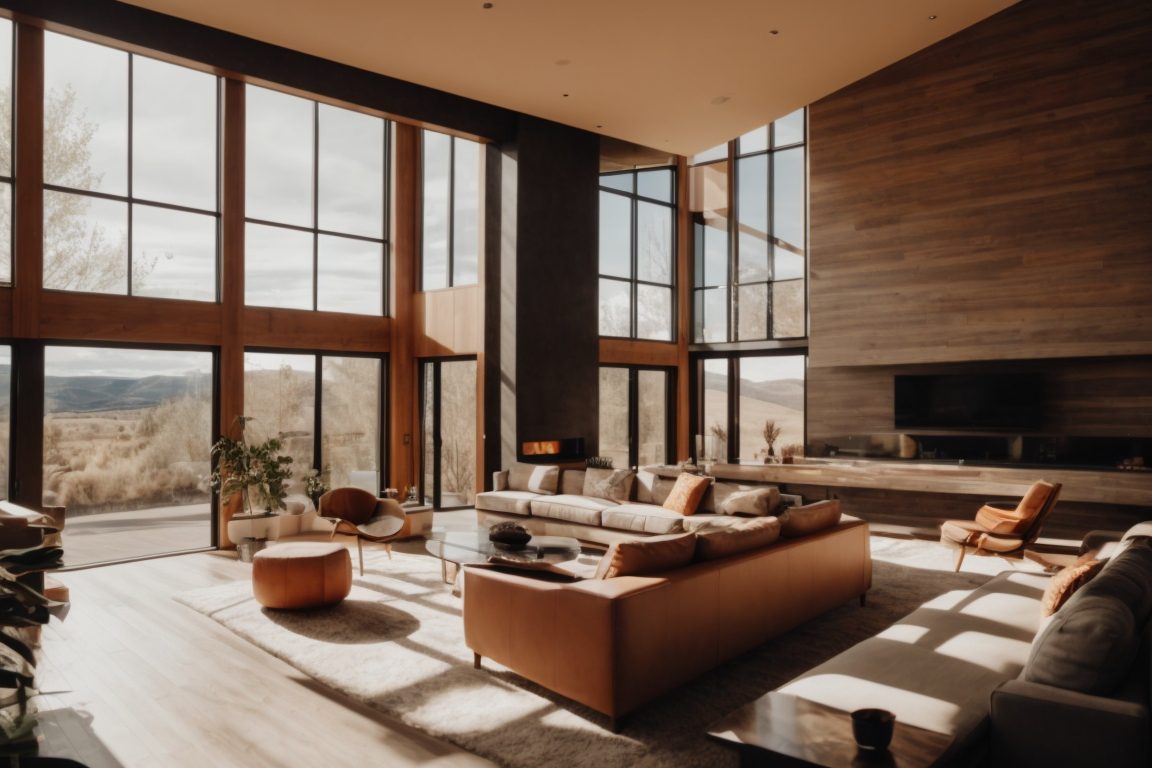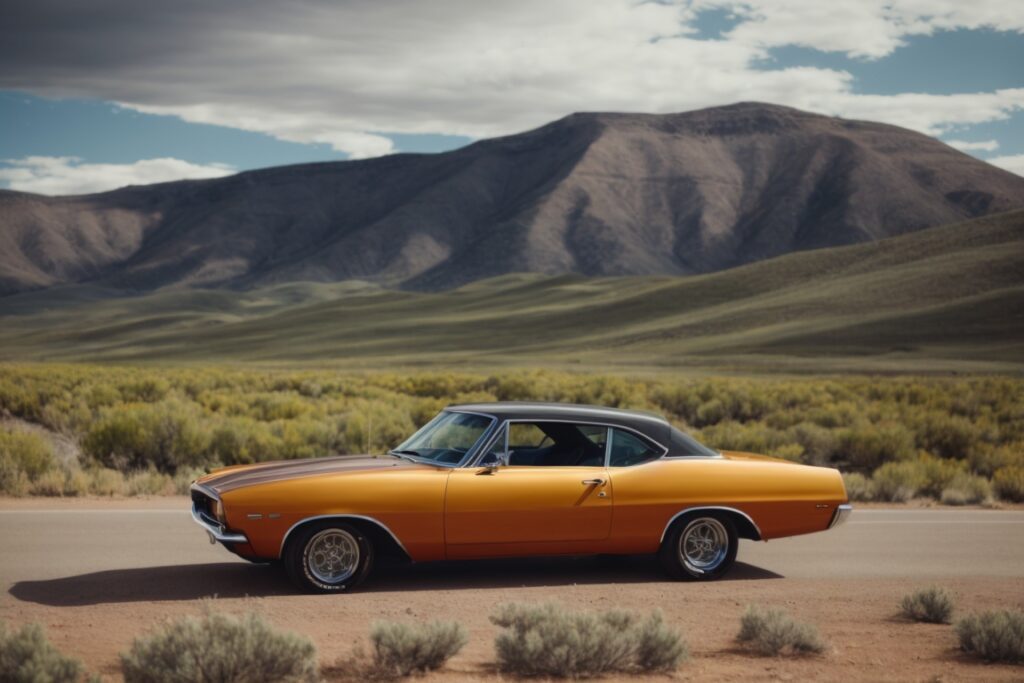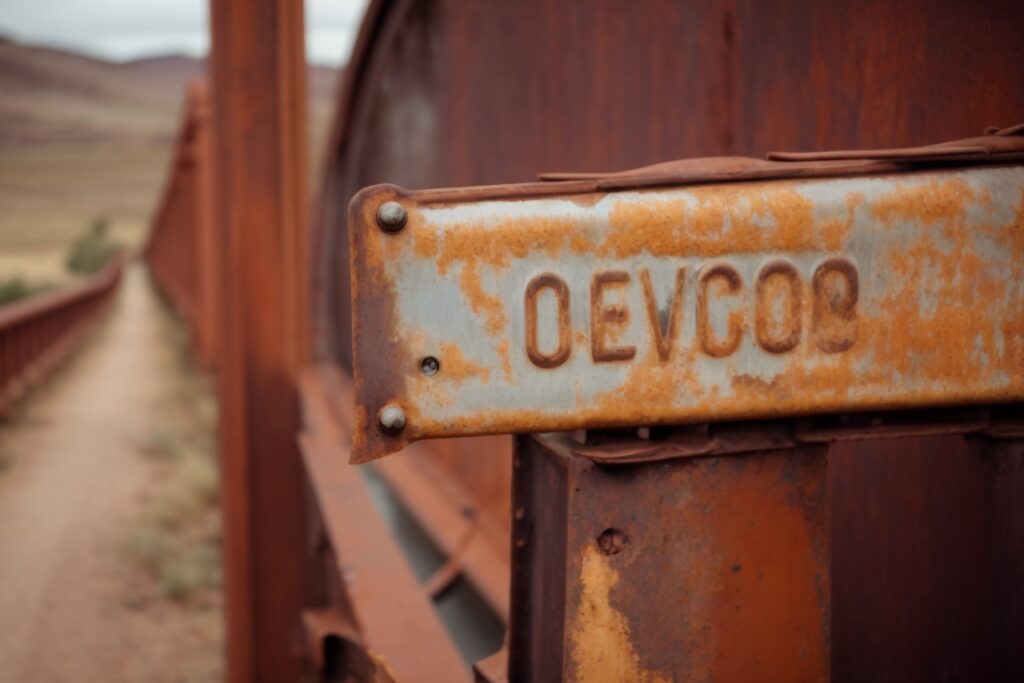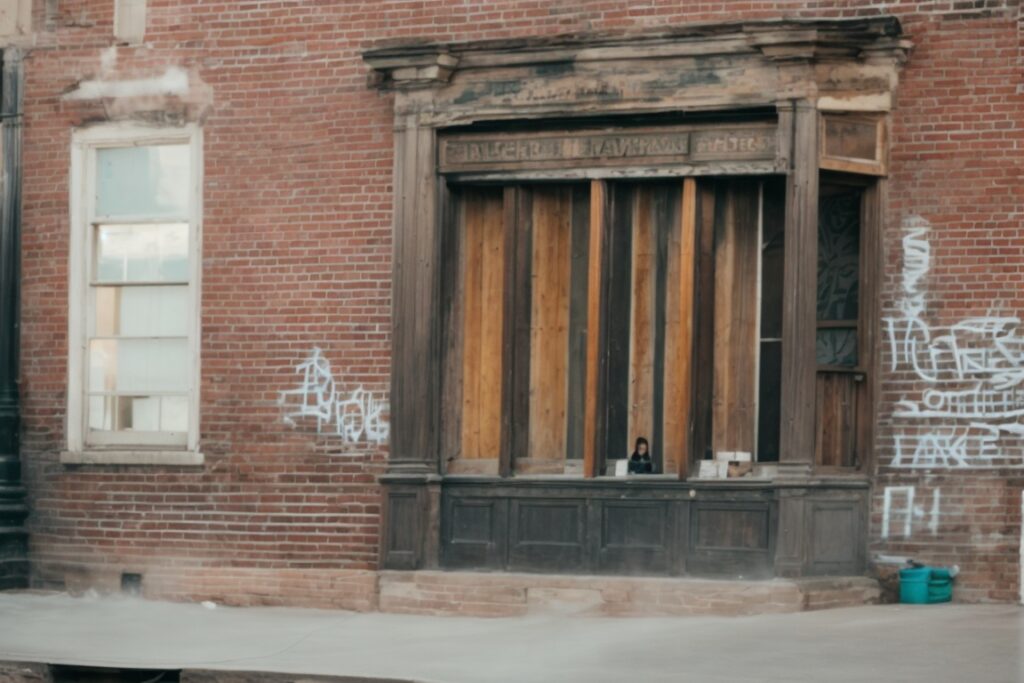

Colorado’s Climate Challenge: The Need for Window Tint
In the picturesque landscapes of Colorado, residents experience a unique weather phenomenon that not only defines the state’s natural beauty but also presents a less favorable challenge – the extreme variability in climate conditions. From the scorching summer sun beating down on the suburbs of Denver to the icy chill of winter winds sweeping through the Rockies, Coloradans are caught in a constant battle to maintain comfort within their homes. At the heart of this struggle is the significant problem posed by inadequate window tinting.
The essence of window tint Colorado homes face is not just about the discomfort from temperature fluctuations. It’s a matter of energy efficiency and protection against harmful ultraviolet (UV) rays. As the sun’s rays penetrate through clear, untreated windows, they raise indoor temperatures, compelling homeowners to crank up their air conditioning in summer or crank up the heat in winter, leading to soaring energy bills. Furthermore, these penetrating rays pose a risk to the health of the residents and the longevity of interior furnishings.
This problem extends beyond a mere inconvenience; it encapsulates a broader issue of environmental sustainability and personal well-being. Without proper window tinting, Colorado homes are at a disadvantage, losing the battle against the elements before it even begins. The lack of efficient window solutions not only impacts the comfort and protection of interiors but also contributes to the larger issue of energy waste, pushing homeowners to seek more sustainable, protective measures.
Thus, the challenge faced by homeowners in Colorado isn’t just about finding a way to keep their homes comfortable amidst the weather extremes; it’s about adopting a solution that offers protection, efficiency, and sustainability in the face of the state’s unpredictable climate. It’s a search for balance in an environment where the sun’s intensity and the cold’s bite are equally formidable foes.
Understanding the Climate Challenge in Colorado
Colorado’s climate presents a unique set of challenges for homeowners, particularly when it comes to energy efficiency and UV protection in their homes. At the heart of the problem is Colorado’s broad range of weather extremes, from blistering summer heat to biting winter cold, coupled with an altitude that intensifies the sun’s effects. This variability exposes residents to a barrage of conditions demanding constant heating or cooling to maintain comfort, leading to elevated energy consumption.
Beyond discomfort, the intensified UV exposure inherent to Colorado’s elevation can accelerate the deterioration of home interiors. Furniture, artworks, and even flooring can fade or degrade prematurely under relentless sun exposure, a gradual but persistent issue. What begins as a quest for comfort and aesthetic preservation slowly evolves into a long-term battle against escalating energy bills and the ceaseless degradation of valuable home contents. These challenges underline the importance of understanding Colorado’s unique climate and its implications for home maintenance.
Energy Drain: The Real Cost of Ignoring Window Tint in Colorado
Living in Colorado without window tint can directly impact homeowners and renters alike by increasing energy costs and exposing occupants to harmful UV rays. Colorado’s unique climate, characterized by intense sunlight and fluctuating temperatures, can lead to significant thermal gain inside homes and vehicles. This not only forces cooling systems to work harder, resulting in higher energy bills, but also exposes residents to UV radiation, which can cause skin damage and fade interior furnishings. The absence of window tinting compounds these issues, making it not just a matter of comfort, but of health and financial well-being.
Exposing the True Cost of Ignoring Window Tint in Colorado’s Climate
Picture this: you’re enjoying a lovely day at home in Colorado, but little do you know, your seemingly innocuous windows are silently contributing to a growing problem that can have significant repercussions on your comfort, health, and wallet.
Without the protection of quality window tinting, the fierce Colorado sun mercilessly pours into your living spaces, turning what should be your safe haven into a sweltering greenhouse. This intense sunlight doesn’t just fade your furniture and damage your prized possessions; it forces your air conditioning system into overdrive, attempting to combat the unrelenting heat. Imagine the shock when you see your energy bills skyrocketing, month after month, because your home is inefficiently fighting a battle against the sun.
But the financial strain doesn’t end there. The UV rays that accompany this sunlight are not only harmful to your skin, potentially increasing the risk of skin cancer from prolonged exposure but also significantly deteriorate your window frames and sealants over time. This degradation can lead to costly repairs and replacements, not to mention the potential for leaks and water damage during Colorado’s unpredictable weather extremes.
And let’s not forget the comfort of your home. The relentless heat and glare disrupt your daily activities, making it nearly impossible to watch television or work on a computer without squinting or suffering from headaches. It’s a constant battle, adjusting blinds and curtains, trying to find a moment’s respite from the sun’s glare, all while your home’s aesthetic and open feel are compromised.
Ignoring the problem today may seem convenient, but the cumulative effect of Colorado’s intense sun without the protection of window tint will inevitably lead to an uncomfortable living environment, escalating expenses, and potential health risks. The question now is, how much are you willing to compromise before taking action?
The Immediate Need for Window Tint in Colorado Homes
Colorado’s unique climatic conditions, ranging from scorching summers to frigid winters, create an urgent need for window tinting in homes. This urgency is not merely about comfort or aesthetics; it’s about health, energy efficiency, and the longevity of your interiors. Colorado’s intense sunlight and UV exposure can lead to significant damage over time, including faded furnishings, increased interior temperatures, and a higher risk of skin cancer for you and your family.
The immediate application of window tint can drastically mitigate these risks by blocking harmful UV rays and reducing heat transfer. Waiting too long to install window tint could result in not only discomfort but also increased energy bills as your HVAC system struggles to maintain a consistent temperature. The urgency to act now is further emphasized by the changing climate, which predicts even more extreme weather conditions in the future. Installing window tint in your Colorado home today is a proactive step towards safeguarding your property and well-being against imminent climatic aggressions.
The Logical Choice: Window Tinting in Colorado’s Climate
Considering the unique climate challenges in Colorado, from intense UV exposure to varying temperatures, window tinting presents itself as a logical solution for homeowners and vehicle owners alike. It’s not just about enhancing aesthetics; it’s a strategic decision for energy efficiency and long-term protection against harmful UV rays. The investment in window tinting services pays off by reducing energy costs, protecting interior furnishings, and providing an added layer of privacy and security. Make the smart choice for your property’s longevity and comfort.
Window Tint: The Ultimate Solution for Colorado’s Climate Extremes
When it comes to combating the unpredictable weather patterns and harsh sunlight experienced in Colorado, the simple, yet revolutionary solution lies in window tinting. This is not just an option, but rather the definitive answer to enhancing the energy efficiency and UV protection of your home or vehicle.
Window tinting stands as a guardian against the intense solar rays that are all too common in Colorado. By investing in this solution, you are not only securing a more comfortable and controlled indoor climate but also protecting your furnishings from fading and degradation caused by UV exposure.
The benefits of window tinting extend beyond mere comfort and preservation. This solution is synonymous with energy savings. With the improved insulation provided by a quality window tint, the strain on your heating and cooling systems is significantly reduced, leading to lower energy bills and a more eco-friendly lifestyle.
Moreover, window tinting offers an added layer of privacy and security, a feature that is invaluable in both residential and automotive applications. It’s a multifaceted solution that addresses not only the climate challenges specific to Colorado but also enhances your overall well-being and safety.
Choosing window tinting in Colorado is not merely making a purchase—it’s a smart investment into the long-term comfort and preservation of your space. It’s time to adopt this practical, cost-effective, and aesthetically pleasing solution that perfectly aligns with the needs of Colorado residents. Embrace window tinting, and make it an integral part of your defense against the weather extremes faced in the Centennial State.
Maximizing Comfort and Efficiency: The Benefits of Window Tinting in Colorado
In the context of Colorado’s climatic extremes, from the searing summer sun to the chilling winter blasts, window tinting steps forward as a compelling solution. The specific benefits of window tinting, particularly in Colorado, are deeply rooted in its ability to combat these weather extremes efficiently. Window tints act as an insulating layer, significantly reducing the heat transfer through windows. This means during those scorching summer months, less heat penetrates indoors, thus reducing the reliance on air conditioning and in turn, lowering energy bills.
Aside from its energy efficiency, window tinting provides formidable protection against the harmful UV rays that are especially intense at Colorado’s altitudes. This UV protection not only guards the skin and eyes of the occupants but also preserves the interior of the home, preventing fading and material degradation over time. Therefore, window tinting in Colorado is more than just an addition to your home; it’s an intelligent investment towards comfort, efficiency, and health.
Unexpected Benefits of Window Tinting
While window tint in Colorado is frequently chosen for its energy efficiency and UV protection, it offers surprising benefits beyond climate control. For instance, window tinting can significantly enhance privacy without sacrificing natural light, providing a comfortable and secure living environment. In addition to privacy, the protective layer reduces the risk of window shattering during accidents, improving safety for occupants. It also extends the life of your interior furnishings by preventing sun damage. Not to mention, window tinting can contribute to the aesthetics of your home or vehicle, offering a sleek, modern appearance that boosts overall value.
Why Coloradans Are Turning to Window Tinting
In Colorado, where the weather fluctuates between the intensity of summer heat and the chill of winter cold, residents face a unique set of challenges. The extremes of temperature not only affect our comfort but also weigh heavily on our energy bills and expose us to harmful UV rays. In this context, window tinting emerges not as a luxury but as a strategic move toward achieving energy efficiency and protection from the sun.
Considering these climate extremes, window tinting represents an intelligent approach to preemptively addressing the environmental stresses placed on our homes and vehicles. It’s not merely about the immediate gratification of cooler interiors during summer or the retention of warmth during winter; it’s about committing to a long-term solution that enhances our living conditions. Window tints act as a barrier, reducing the penetration of UV rays that contribute to the fading of fabrics and flooring and increasing the risk of skin cancer.
This adaptation to Colorado’s harsh weather is more than just an adjustment; it’s a testament to the foresight of homeowners and vehicle owners who prioritize their comfort, health, and financial efficiency. Opting for window tinting is a reflection of a thoughtful mindset, one that recognizes the importance of proactively addressing the challenges posed by our environment.
Ultimately, embracing window tinting in Colorado isn’t just about dealing with the present; it’s about preparing for the future. It’s about acknowledging that in a state known for its breathtaking landscapes and extreme weather, the intelligent choice is the one that secures our comfort, health, and pocketbooks against the unpredictability of our climate. The move towards window tinting isn’t merely a trend—it’s a practical strategy for those looking to enhance their quality of life in Colorado.
Upgrade Your Comfort and Protection Today
Don’t let Colorado’s weather extremes dictate your comfort and energy bills! Embrace the efficiency and protection of window tinting now. Take action today by contacting us for a window tint installation. Secure your home or office against harsh UV rays and optimize your energy consumption with our top-rated window tint Colorado services. Your comfort and protection are just a call away—make the smart choice for a more efficient and safer environment now.








About The Author: Mike Kinsey
Mike is the operations manager for Colorado Commercial Window Tinting, the largest commercial window film company in the state of Colorado. Mike has been working in the tinting for over 15 years and has installed over a combined 250,000 square feet of window film for hotels, restaurants, retail stores, offices, and commercial properties all throughout the Denver, Boulder, Ft Collins, and Colorado Springs metro areas. Mike's extensive product knowledge, construction experience, and project management skills make him an expert in his field. In addition to overseeing all installs, Mike also is in charge of sales and customer relations for the Colorado office. He is certified by 3M, EnerLogic, and AIA for continuing education.
More posts by Mike Kinsey